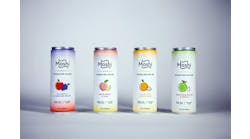Digital editor's note: They say a picture is worth a thousand words, and this photo — source unknown; it's just one of those things that gets passed around via e-mail — surely sums up the sentiments of many who rely on gas-powered vehicles.
|
One Saturday, the wife came home from a morning of errands, which apparently included a stop at the gas station, and she announced she was cooking dinner that night. The reason: $30 worth of gas did not even come close to filling up her small car.“You’re crazy if you go out again just to pick up food for dinner. Why waste the gas?” she asked.I nevertheless remained a little puzzled by any connection between the two. But a week later, I was talking with John Tyson and Dick Bond, the two top guys at Tyson Foods, and they said they were “bracing for the impact of high energy prices on foodservice.”“We’re kind of crossing our fingers right now,” said Tyson. “We don’t think [foodservice sales] are going to decline, but they could lose their momentum. When it costs $40 to fill up your gas tank, that takes at least a few dollars that a family might have used to stop at a QSR [quick service restaurant].”Foodservice — everything from restaurant meals to Kentucky Fried Chicken to cooked foods at the local grocery — is a big piece of Tyson’s business. And every one of those foodservice opportunities requires you to drive your car to get there.$1.49 a gallon was a small price to pay for the double-edged sword of affluence and time-starvation enjoyed by two-income couples. $3 a gallon may be too high a price. For my wife, it was.Cheap gas and mobility have reworked the food retailing industry in recent years and, by association, the food processing industry. Those twin factors gave birth to the modern grocery store 75 years ago, when people began bypassing their corner markets to drive short distances for trunk-filling Saturday morning shopping trips. More recently, those same factors seemed to be behind the demise of the grocery, allowing either long-haul trips to a Sam’s Club or many shorter trips to dollar stores, convenience stores or take-out restaurants.I recently rediscovered a year-old Unilever study of 2,400 American shoppers that found almost two-thirds of all shopping trips (62 percent) were quick trips, one quarter were fill-in trips, while the classic stock-up was becoming rare, accounting for only 13 percent of visits — a clear indication of what was then “a new approach to food shopping in America.” And the food processing industry certainly responded, coming up with new products and dealing with new customers.But, like I said, that study was more than a year old. That era may be coming to an end.I don’t think anyone knows the lasting effects of high gasoline prices on all the little niches of our economy. But for at least one suburban couple, who haven’t washed a frying pan in weeks, it meant one weekly trip to the local grocery followed by a home-cooked meal. If a lot of your eggs are in foodservice and fragmented retail formats, perhaps it’s time to reconsider the good old grocery store and people cooking at home.

